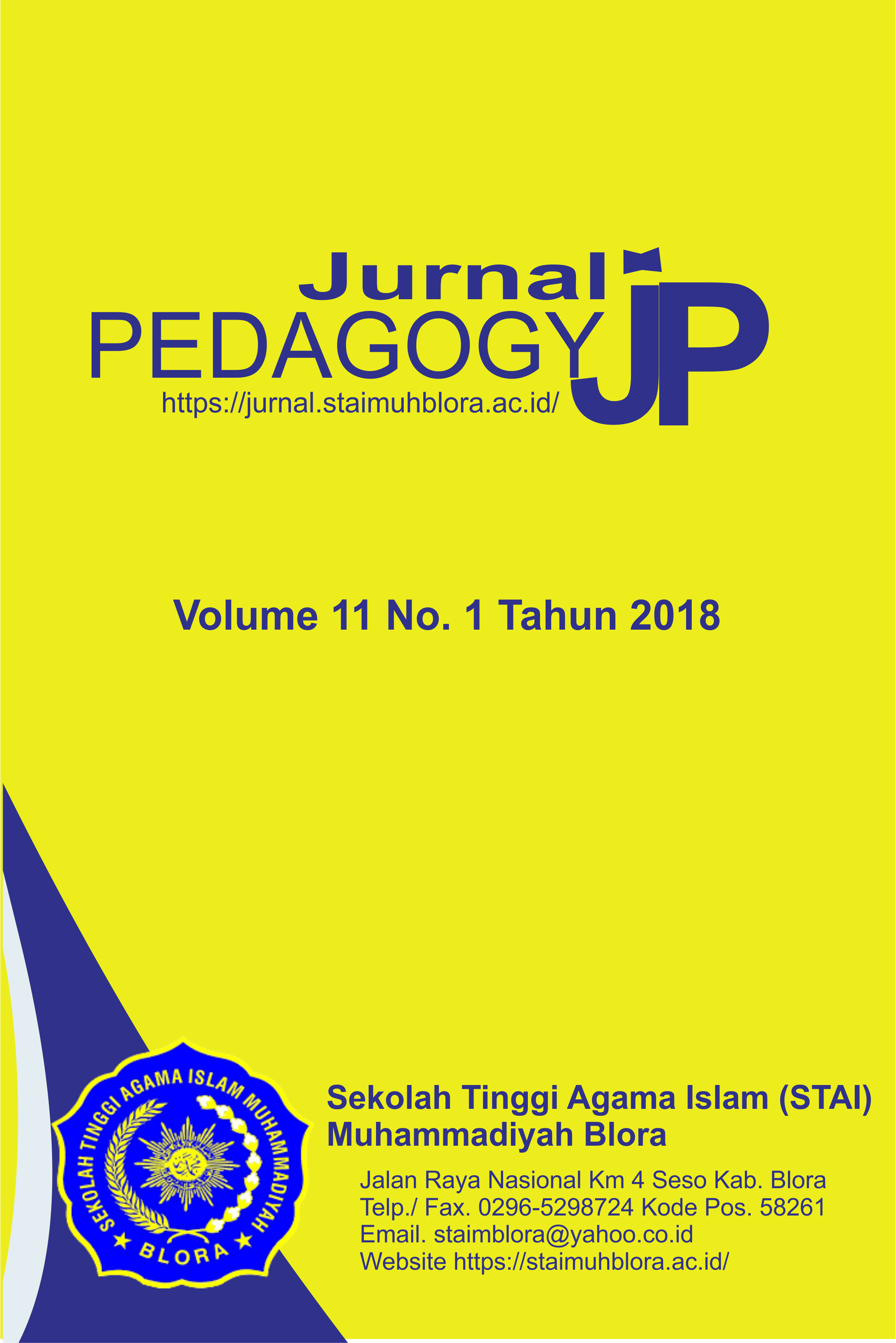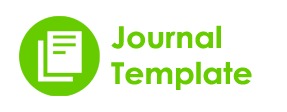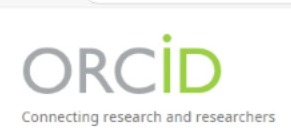Humanist And Multicultural Islamic Education Learning Models
DOI:
https://doi.org/10.63889/pedagogy.v18i1.312Keywords:
islamic religious education, learning, model, humanist approach, multiculturalismAbstract
This research is motivated by the urgency of the need for an Islamic Religious Education (PAI) learning approach that can instill human values and multiculturalism in facing the complexity of a pluralistic society. In practice, PAI learning still tends to focus on normative-doctrinal aspects and does not provide space for cross-cultural understanding, empathy, and tolerance. The gap in previous research lies in the lack of in-depth studies related to PAI learning models that explicitly integrate humanist and multicultural approaches, both in concept and practical implementation in the classroom. This study uses a descriptive qualitative approach that focuses on literature studies (library research) as the main method. Data was collected through a systematic review of secondary sources, such as scientific journal articles, academic books, and previous research results relevant to the themes of Islamic education, humanism, and multiculturalism. The analysis process is carried out by content analysis techniques, which examine the content and meanings of various sources to formulate key concepts and learning patterns by humanistic and multicultural principles. The results of the study show that several PAI learning models have the potential to be developed based on humanist and multicultural approaches, such as dialogue-based learning, reflective-critical learning, and contextual learning that are oriented toward strengthening the values of peace, tolerance, and social justice. These models not only foster an inclusive understanding of religion but also build students' awareness of the importance of coexistence in diversity. This research makes a theoretical contribution to the development of a more humanist and multicultural discourse of Islamic education while offering a conceptual basis for educators and policymakers in designing relevant and transformative religious learning in the era of plurality.
References
[1] Siti Saodah, “Model pendidikan agama islam berwawasan multikultural di madrasah (Sebuah Analis Untuk Strategi Pengembangan),” vol. I, no. 01, pp. 75–100, 2018.
[2] M. Ahyan and Y. Sya, “Pembelajaran Pendidikan Agama Islam Berwawasan Multikultural Di Era Digitl,” pp. 155–170, 2019.
[3] S. A. Sukisno, “Tinjauan Konsep Prulalis Dan Multikulutral Dalam Pendidikan Agama Islam,” vol. 17, no. April, pp. 118–127, 2024.
[4] S. Anwar, “Metode Dan Strategi Pengembangan Moderasi Beragama Di Lembaga Pendidikan,” J. Pedagog., vol. 20, pp. 1–20, 2022.
[5] A. Syaifulloh, A. Nurhartanto, and M. Munawar, “The Moderate And Multicultural Education In The Synthesis Of Imam Al-Ghazali Thought : A Prospective Analysis Of George R . Knight,” vol. 17, no. 2, 2024.
[6] A. Kasdi, A. Karim, U. Farida, and M. Huda, “Development of Waqf in the Middle East and its Role in Pioneering Contemporary Islamic Civilization: A Historical Approach,” J. Islam. Thought Civiliz., vol. 12, no. 1, pp. 186–198, 2022, https://doi.org/10.32350/jitc.121.10.
[7] M. Zakiy, “The strategy of Islamic economic colleges to prepare their graduates to work in Islamic banks,” High. Educ. Ski. Work. Learn., vol. 11, no. 5, pp. 1130–1142, 2021, https://doi.org/10.1108/HESWBL-01-2021-0010.
[8] T. Z. Haq, “Pola Asuh Orang Tua Dalam Perilaku Sosial Generasi Millenial Ditinjau Dari Neurosains,” Al-Mada J. Agama, Sos. dan Budaya, vol. 3, no. 1, pp. 88–108, 2020, https://doi.org/10.31538/almada.v3i1.609.
[9] A. A. Karim, A. Budiawati, F. W. Ansori, D. Latipah, U. N. Putra, and K. Sukabumi, “Sinergisitas Bank Indonesia Dan Kementerian Agama,” vol. 4789, 2022.
[10] M. M. Solichin, “Teori Belajar Humanistik Dan Aplikasinya Dalam Pendidikan Agama Islam: Telaah Materi Dan Metode Pembelajaran,” Islam. J. Stud. Islam, vol. 5, no. 1, pp. 1–12, 2018, https://doi.org/10.19105/islamuna.v5i1.1856.
[11] Heriedi, “Pembelajaran Pendidikan Agama Islam ( PAI ) Berbasis Multikultural,” pp. 87–102, 2020.
[12] Lilik Andaryuni, “Pendidikan Multikultural Di Perguruan Tinggi (Studi Terhadap Stain Samarinda),” vol. 6, no. August, pp. 1–43, 2014.
[13] R. P. Dharma, Waston, and M. N. R. Maksum, “Konsep Pendidikan Multikultural Dalam Pandangan James A Banks,” Model. J. Progr. Stud. PGMI, vol. 10, no. 2, pp. 249–258, 2023.
[14] T. Wiwitan, N. Yulianita, and S. Novita, “Model Dialogis Dalam Komunikasi Pelayanan Perguruan Tinggi Swasta Di Masa Pandemi Covid-19,” Perspekt. Komun. J. Ilmu Komun. Polit. dan Komun. Bisnis, vol. 6, no. 2, p. 175, 2022, https://doi.org/10.24853/pk.6.2.175-182k.
[15] N. Luh, E. Ratmawati, M. Goreti, R. Kristiantari, and I. K. Supir, “Metode Pembelajaran Dialogis dengan Gaya Belajar Auditory Terhadap Kemampuan Komunikasi Pada Anak Usia Dini,” vol. 8, no. 3, pp. 363–371, 2024, https://doi.org/10.23887/jppsh.v8i3.83847.
[16] A. Faqih, “MAZHAB GOOGLE: Nalar Fikih Generasi Z dan Fatwa Shopping di SMAN 2
Lamongan dan MA ‘Matholi’ul Anwar’ Lamongan,” TA’LIM J. Stud. Pendidik. Islam, vol. 6, no. 2, pp. 140–172, 2023.
[17] M. H. Ikhsan, Imsar, and M. Syahbudi, “Comparative Analysis Of The Success Of The Islamic
Economy A Historical Study Of The Economic Reforms Of Abdul Malik Bin Marwan And Umar Bin Abdul Aziz,” J. Pamator, vol. 17, no. 2, pp. 225–240, 2024, https://doi.org/10.21107/pamator.v17i2/25912 Manuscript.
[18] M. Y. Balaka, “Metode penelitian Kuantitatif,” Metodol. Penelit. Pendidik. Kualitatif, vol. 1, p. 130, 2022.
[19] A. Soesana et al., Metodologi Penelitian Kualitatif. 2023.
[20] NF Andhini, Metode Penelitian Kualitatif Dan Kuantitatif., vol. 53, no. January. 2017.
[21] M. S. Sofiyana et al., Metodologi Penelitian Pendidikan Kualitatif. 2022.
[22] Maulana, W. and S. A. Insaniyah, “Integrasi Nilai-Nilai Humanis Dalam Kurikulum Pendidikan Multikultural: Tantangan Dan Peluang,” Arriyadhah, vol. 20, no. Ii, pp. 39-48., 2023.
[23] E. Hadiyati and F. Hendrasto, “Entrepreneurial Marketing Strategy of Micro, Small and Medium Enterprises in Pandemic Covid-19 Era,” Int. J. Econ. Bus. Adm., vol. IX, no. Issue 2, pp. 178–191, 2021, https://doi.org/10.35808/ijeba/696.
[24] Fahrudin, H. Asari, and S. Halimah, “Implementasi Kurikulum 2013 Pendidikan Agama Islam dan Budi Pekerti dalam Menanamkan Akhlakul Karimah Siswa,” J. Chem. Inf. Model., vol. 53, no. 9, pp. 1689–1699, 2019, http://jurnal.uinsu.ac.id/index.php/eduriligia/article/view/1072
[25] F. R. Amanda, A. F. Sari, and K. Noviartati, “Penerapan membaca dialogis pada pembelajaran interpretasi tabel,” no. 2021, pp. 70–78, 2025.
[26] M. Begum, “Female Leadership in Public Religious Space: An Alternative Group of Women in Tablighi Jamaat in Bangladesh,” J. Int. Dev. Coop., vol. 22, no. 1, pp. 25–36, 2016.
[27] S. Sidik, F. Tanipu, N. Solapari, M. S. Assabana, and R. Rahman, “Konsep Pendidikan Keadilan Gender di Dalam Sistem Pendidikan Indonesia,” JIIP - J. Ilm. Ilmu Pendidik., vol. 6, no. 4, pp. 2845–2859, 2023, https://doi.org/10.54371/jiip.v6i4.1949.
[28] Rafiud Ilmudinulloh, “Model Pembelajaran Berbasis Proyek untuk Mengembangkan Kemampuan Berpikir Kritis Mahasiswa,” J. Ris. Jurnalistik dan Media Digit., pp. 121–128, 2022, https://doi.org/10.29313/jrjmd.v2i2.1366.
[29] S. Dewi, “Penerapan Model Pembelajaran Berbasis Proyek untuk Meningkatkan Hasil Belajar,” PTK J. Tindakan Kelas, vol. 3, no. 2, pp. 204–215, 2023, https://doi.org/10.53624/ptk.v3i2.177.
[30] N. W. Rati, N. Kusmaryatni, and N. Rediani, “Pengaruh Model Pembelajaran Berbasis Proyek
Terhadap Kreativitas Dan Hasil Belajar Pendidikan Ipa Sd Mahasiswa Pgsd Undiksha Upp Singaraja,” JPI (Jurnal Pendidik. Indones., vol. 6, no. 1, pp. 60–71, 2017, https://doi.org/10.23887/jpi-undiksha.v6i1.9059.
[31] Emira Hayatina Ramadhan and Hindun Hindun, “Penerapan Model Pembelajaran Berbasis
Proyek untuk Membantu Siswa Berpikir Kreatif,” Protas. J. Bahasa, Sastra, Budaya, dan Pengajarannya, vol. 2, no. 2, pp. 43–54, 2023, https://doi.org/10.55606/protasis.v2i2.98.
[32] D. Nababan, “Pemahaman Model Pembelajaran Kontekstual Dalam Model Pembelajaran (Ctl),” J. Pendidik. Sos. dan Hum., vol. 2, no. 2, pp. 825–837, 2023.
[33] K. A. Winata, I. Solihin, U. Ruswandi, and M. Erihadiana, “Moderasi Islam Dalam Pembelajaran PAI Melalui Model Pembelajaran Konstekstual,” J. Penelit. dan Pengemb. Pendidik., vol. 3, no. 2, pp. 82–92, 2020.
[34] Muhartini; Amril Mansur; Abu Bakar, “Pembelajaran Kontekstual Dalam Pembelajaran Problem Based Learning,” Incrementapedia J. Pendidik. Anak Usia Dini, vol. 4, no. 2, pp. 27– 36, 2022, https://doi.org/10.36456/incrementapedia.vol4.no2.a6563.
[35] Q. Hurroh, A. Ma’ruf, and M. Abdullah, “Implementation Of FlashCard Learning Media For Student Learning Motivation And Arabic Language Subject (At MI Miftahul Ulum 01 Cukur
Guling Kulon 1 Lumbang Pasuruan East Java,” J. Pendidik. Indones., vol. 2, no. 1, pp. 32–37, 2023, https://doi.org/10.58471/ju-pendi.v2i01.198
[36] M. Rasidi, M. Y. Pratama, and M. I. Arisandi, “Strategic management implementation of the cooperatives, industry, and trade department in the development of micro small and medium business in Situbondo Regency,” J. Manag. Sci., vol. 8, no. 1, pp. 1–8, 2025, https://doi.org/10.35335/jmas.v8i1.609.
[37] A. Matinul Haq and E. Roesminingsih, “Situational Leadership Skills of Foundation Heads in Human Resource Development for Early Childhood Education,” Munaddhomah J. Manaj. Pendidik. Islam, vol. 5, no. 1, pp. 26–40, 2023, https://doi.org/10.31538/munaddhomah.v5i1.545.
[38] H. Dzaki, M. Asma, R. W. Suci, U. Sakhinah, and F. Hidayat, “Causes of Online Gambling Entangling Gen Z,” Solo Int. Collab. Publ. Soc. Sci. Humanit., vol. 2, no. 3, 2024, https://doi.org/10.61455/sicopus.v2i03.156.
[39] R. Santika, R. Farizki, and H. N. Adiantika, “English Language Learning with Flashcard Media and Educational Posters to Improve Language Education,” J. Soc. Sci., vol. 4, no. 3, pp. 706– 711, 2023, https://doi.org/10.46799/jss.v4i3.580.
[40] N. Kurnia Putra, A. Amrin, M. M. Abu Zinah, M. Masuwd, and S. Subhan, “Consumption from an Islamic Economic Perspective: Study of Quranic Verses on Consumption,” Demak Univers. J. Islam Sharia, vol. 1, no. 01, pp. 37–45, 2023, https://doi.org/10.61455/deujis.v1i01.21.
[41] F. Arif Lubis, “Bata Ilyas Educational Management Review Implementasi Prinsip-Prinsip Asuransi Syariah Pada Pt. Prudential Syariah Binjai,” Bata Ilyas Educ. Manag. Rev., vol. 3, no. 1, pp. 77–85, 2023, https://doi.org/10.37531/biemr.v3i1.650.
[42] S. Syamsuri, Y. Sa’adah, and I. A. Roslan, “Reducing Public Poverty Through Optimization of
Zakat Funding as an Effort to Achieve Sustainable Development Goals (SDGs) in Indonesia,” J. Ilm. Ekon. Islam, vol. 8, no. 1, p. 792, 2022, https://doi.org/10.29040/jiei.v8i1.3872.
[43] D. Sinta, M. Rahmat, S. Anwar, and A. Nurhuda, “Religiusitas Dan Kematangan Beragama Dalam Membantu Menghadapi Quarter-Life Crisis Bagi Kalangan Generasi Milenial,” AlHikmah J. Agama dan Ilmu Pengetah., vol. 21, no. 2, pp. 214–227, 2024, https://doi.org/10.25299/al-hikmah:jaip.2024.vol21(2).16940.
[44] D. S. Abdurrahman, HeruJuabdinSada, Saiful Bahri, “Attractive : Innovative Education
Journal,” Students’ Difficulties Elem. Sch. Increasing Lit. Abil., vol. 4, no. 1, pp. 1–12, 2022, [Online]. Available: https://attractivejournal.com/index.php/aj/article/download/743/576.
Downloads
Published
How to Cite
Issue
Section
License
Copyright (c) 2025 Cholisa Rosanti, Rina Murtyaningsih, Armin Nurhartanto

This work is licensed under a Creative Commons Attribution-ShareAlike 4.0 International License.






